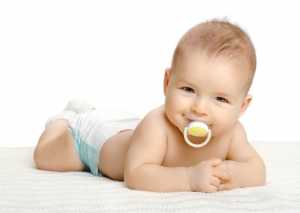While life with a three- to six-month-old still has its ups and downs, its calmer and more predictable than the first few weeks. The whirlwind of activity that greets the arrival of a new baby has died down; cards and gifts have stopped arriving; and both parents (but especially the mother) are beginning to feel a bit more like themselves. Feeding, diapering, dressing, and bathing the baby have become second nature.

Things are easier from the babys point of view as well, largely because you have relaxed enough to learn the meanings of the various cries, gestures, and other signals with which she communicates. When your baby starts to fuss, you know what types of small adjustments less light, less noise, less intense interaction your baby may require to become content. As a result, you can both focus your attention on your budding social relationship.
The third month marks an exciting turning point in the babys development as a social being. Infants begin to cry less and spend more time cooing, kicking, or lying on their backs and playing with their fingers and toes. They make eye contact and deliberately gurgle, and gyrate to get or maintain a parents or other caregivers attention. By about five months of age, they laugh and squeal with pleasure and excitement. Specific types of behavior that denote fear, curiosity, contentment, anger, and other feelings also become more pronounced, as well as more individualized from baby to baby.
Along with being more sociable in the second three months of life, .babies are also more intrigued by things such as lights, toys, hands, and hair. Six-week-old babies spend much of their calm and alert time gazing at their mothers or fathers. By contrast, six-month-olds pay increased attention to objects, spending much of their calm, wakeful intervals watching the movements of shadows and light, looking for the sources of sounds, and grasping and mouthing whatever objects they can get their hands on.
This increased involvement with the environment is illustrated by a bottle-fed three-month-olds recognition of her bottle often accompanied by impatient squeals or excited leg and arm movements if the bottles appearance coincides with a feeling of hunger. Three-month-olds also look at their hands and their reflections in mirrors.
Although parents are usually thrilled by the babys ability to interact with the world, they must also be prepared to meet new demands. Providing basic care is no longer enough. At this stage, interaction and stimulation are as important to the babys development as food and sleep.

